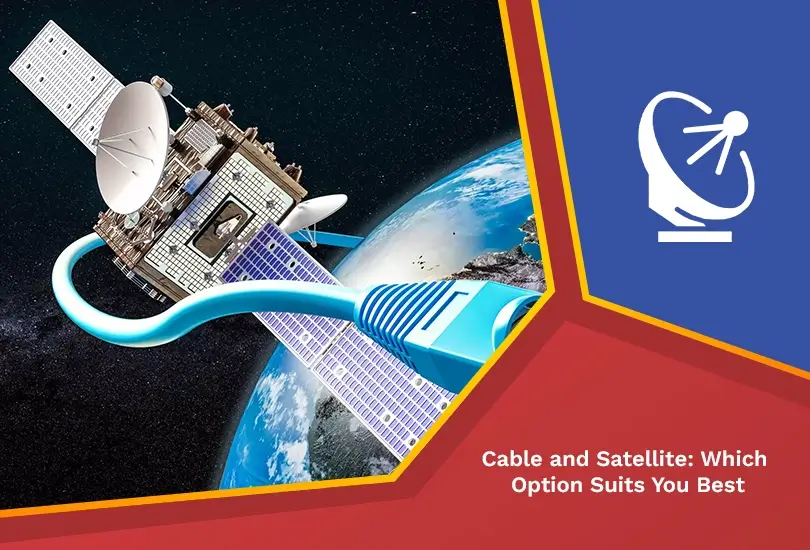Choosing Between Cable and Satellite: Which Option Suits You Best to Leave Traditional TV
- Published in
- News
Deciding between cable and satellite then evaluate which option goes with your needs if you're not yet ready to transition away from traditional TV viewing. Consider factors such as price, availability, content, installation, and reliability to make an informed choice.

While younger Americans increasingly favor streaming, pay TV remains crucial for many viewers. Despite the accelerating trend of cord-cutting, cable and satellite continue to hold significance. The multitude of options available can be overwhelming, making it challenging to discern the best fit. Users face decisions such as choosing between cable and satellite and selecting the most suitable plan.
Streaming aids serve as a valuable resource, offering guidance in navigating the complexities of these choices. Examining the advantages and disadvantages of both cable and satellite, help users identify the best choice altered to their specific needs and preferences, ensuring a seamless and informed decision-making process for individuals and families alike.
In terms of range, cable and satellite services have distinctive advantages based on their structure and reach. Cable systems are notably advantageous in urban areas due to the ease of wiring in populated areas. However, the physical distribution limitations of cable make it challenging to extend the service to rural areas, creating accessibility issues in such areas.
However, satellite services excel in this aspect. Unlike cable, satellite installations are not constrained by physical infrastructure, enabling widespread coverage across the entire United States. This wide reach makes satellite a perfect option for users living in rural regions, where cable infrastructure might not be possible. Additionally, the nationwide coverage characteristic of satellite services allows for easy transitions when users relocate, ensuring continuity of service regardless of the location.
Ultimately, the differing strengths of cable and satellite services cater to distinct user needs, with cable proving more beneficial in densely populated urban settings and satellite providing unparalleled coverage across diverse geographical landscapes, particularly in remote or rural areas.
When considering pricing, cable, and satellite services generally show similar structures, providing various plan options. However, the installation and maintenance requirements of cable infrastructure often make it slightly pricier compared to satellite packages, particularly when additional fees and taxes are factored in.
Typically, basic cable plans start at approximately $65-$70 per month and increase in cost as users go for more channels. In contrast, satellite plans are generally more economical, commencing at a price point approximately $20 lower than cable’s starting cost. However, similar to cable, the expense of satellite plans increases with the inclusion of additional channels in the package. Despite these variations, users can potentially find more cost-effective options through satellite services, particularly at the basic plan level.
When it comes to better content selection we go with satellite. Because satellite not only offers domestic content but also covers international content as well. It also provides the opportunity for users to stream in Ultra-High-Definition 4K. However, it is difficult for cable to make it available for viewers because of the way of transmission.
Satellite services also contain all the prominent domestic channels such as ESPN, FX, TBS, USA Network, Hallmark Channel, and other choices that have become the major of cable plans. If you are someone who is not willing to limit their browsing on TV, satellite is undoubtedly for you.
In most cases, cable installation is normally easier than satellite installation. Cable setup often involves basic equipment installation, while satellite installation necessarily requires a technician to place a dish on the roof and adjust it for signal reception.
However, the ease of cable installation is offset by the challenge it poses for users residing in rural or remote areas where cable service might be unavailable. While cable holds an advantage in ease of installation, its accessibility limitations in non-urban regions highlight the potential challenges for some users.
When it comes to reliability, cable wins over satellite TV. Satellite service relies on precise settings with the user’s equipment, making it susceptible to troubles during severe weather conditions. However, cable users receive their signal through underground cables, which are less weak to external factors like high winds or solar flares, except in rare cases that affect the signal transmission process.
While cable boasts greater reliability, its more complex infrastructure necessitates periodic maintenance and may still encounter outages. It’s worth mentioning that satellite providers such as DISH often provide a money-back guarantee based on signal reliability, offering users recourse in the event of satellite reception loss. This highlights the responsibility of satellite providers to address potential concerns and ensure a satisfactory watching experience for their customers.
The preferable choice between cable and satellite contracts depends on individual preferences. Cable plans often offer monthly subscriptions, allowing for easy cancellation at any time. In contrast, satellite contracts may span multiple years, ensuring price stability throughout the agreement’s duration and protecting users from immediate price hikes.
Opting for a cable subscription provides flexibility with a month-to-month commitment, while satellite services guarantee price consistency, appealing to users seeking long-term financial security. Selecting a service that aligns with personal priorities ensures a tailored viewing experience that meets specific needs and preferences.
To summarize, satellite surpasses cable in terms of price, availability range, and content diversity, while cable prevails in terms of installation convenience and reliability. Customers must prioritize their preferences, determining whether they prioritize the advantages of satellite or the strengths of cable, particularly if they remain uninterested in live TV streaming services like DIRECTV STREAM and Hulu + Live TV.
Read More: